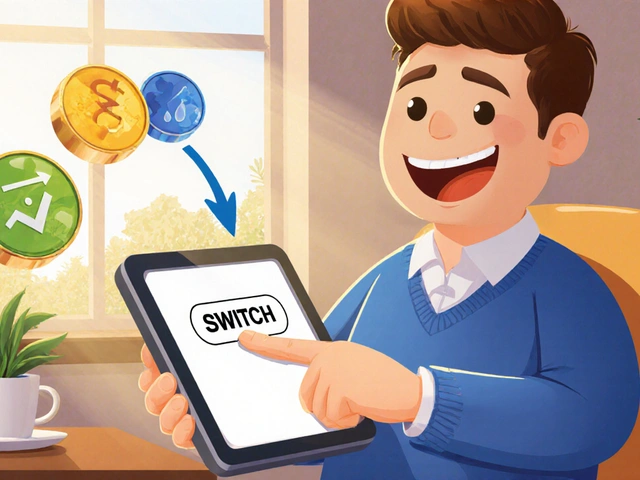How to Choose Nasal Drops: Simple Tips for Effective Relief
Standing in a pharmacy aisle, a runny nose and a throbbing headache remind you how much you miss breathing through both nostrils. Do you go for the spray that promises 'instant' relief? Or the one labeled 'natural'? Picking the right nasal drops isn’t a one-size-fits-all situation. The wrong choice can make things worse, or just...do nothing. Advertisements and grand claims don’t make it easier. It seems like everyone’s got an opinion—doctors, the internet, even your neighbor swears by a homemade remedy involving coconut oil. It can all feel overwhelming, but making a smart choice for your nose doesn’t have to be rocket science.
The Science Behind Nasal Drops: How They Actually Work
Nasal drops are tiny miracle workers with a simple job: helping you breathe better by clearing or soothing your nasal passages. But why does something so small have such a big effect? Well, when your nose gets stuffy—thanks to allergies, a cold, or sinus infection—your nasal tissues swell and start producing extra mucus. This is your body’s way of trapping germs. But it also turns you into a mouth-breather overnight.
The most common types of nasal drops are:
- Saline drops – just salt water, but don’t let that fool you. They power-wash out mucus, allergens, and even pollution. Safe for everyone, including babies. They don’t cause side effects or dependency, which is rare in medicine.
- Decongestant drops – like oxymetazoline or xylometazoline, these squeeze blood vessels in your nose, shrinking swollen tissues to open things up fast. But here’s the catch: use them for more than 3-5 days, and your nose may rebel—cue the dreaded rebound congestion.
- Antihistamine drops – perfect if allergies are the culprit. They reduce nasal itch and drip by blocking histamine, the irritating chemical your body produces during an allergic reaction.
- Steroid drops – if you have chronic sinus issues, these calm inflammation deep inside your nose. They take longer to work (think days, not minutes), but are a lifesaver for people with chronic rhinitis or allergies.
What really sets each type apart is how they tackle different causes of nasal misery. For example, saline drops don’t shrink anything, but they thin out and rinse away mucus. Decongestants act almost instantly by physically shrinking swollen tissues—great for that "I can’t breathe" midnight moment. Antihistamines keep allergies at bay, and steroids offer long-term help for stubborn sinus inflammation. Knowing which one fits your symptoms is half the battle.
Check this out—a recent review in the Indian Journal of Otolaryngology (2023) found that over 70% of people using decongestant drops for more than a week experienced rebound congestion. Meanwhile, saline drops stayed safe, even with daily use.
Here’s a quick breakdown of nasal drop types and their main uses in a handy table:
| Type | Main Use | Onset of Relief | Safe for Children? | Risks |
|---|---|---|---|---|
| Saline | Moisturize, clear mucus | Few minutes | Yes | None |
| Decongestant | Reduce swelling, unblock nose | 1-5 minutes | Not under 6 yrs | Rebound congestion |
| Antihistamine | Allergy-related symptoms | 5-15 minutes | Ask doctor | Rare irritation |
| Steroid | Chronic inflammation | Hours/Days | Ask doctor | Nosebleeds, dryness |
When in doubt, always check the active ingredient—the tiny print on the box. If you have ongoing health issues, ask your doctor before picking up anything stronger than saline drops. Ultimately, knowing the science behind what you’re putting up your nose is powerful. It’s your body; you call the shots.
How to Match Nasal Drops with Your Symptoms
Choosing the right nasal drop is about playing doctor for yourself in a smart way. The main trick? Pay attention to how your stuffy nose feels and what kicked it off. Ask yourself: Is your nose blocked and dry, or is it leaking like a broken tap? Did you just come down with a nasty cold, or do your symptoms flare up whenever your neighbor’s cat visits?
If you’re dealing with regular allergies—like pollen, dust, or animal fur—go straight to antihistamine or steroid drops. They zero in on the chemicals triggering your body’s overreaction. Saline drops help rinse out allergens trapped in your nose, too. If you only get stuffy when you catch a cold or after a bout of sinusitis, decongestant drops can get you breathing in minutes. Just remember, don’t let the quick fix fool you. Using strong drops longer than recommended can leave your nose in worse shape.
Ever heard of rebound congestion? It’s what happens when decongestant drops are overused. Your nose gets hooked, demanding more and more drops to stay clear. Experts actually call it “rhinitis medicamentosa,” and it’s way more common than you’d think—especially among people who self-treat colds without checking with a pharmacist.
If you’re picking for a child, don’t risk regular decongestants. Kids’ nasal tissues are extra sensitive, and the side effects can be worse. Stick with saline. In fact, pediatricians often recommend saline drops for babies as the safest bet.
Let’s break down some common situations:
- Runny nose with sneezing (allergies): Try antihistamine drops or a short course of steroid nasal spray. Add saline rinses to flush out pollen or dust.
- Thick, stubborn mucus (cold or sinus infection): Warm saline drops loosen and clear out mucus. Decongestants only for short-term (under 5 days) use if relief is needed.
- Blocked, dry nose (dry winters, air conditioning): Moisturizing saline drops add humidity. Stay far away from decongestants here—they’ll dry things out even more.
- Babies struggling to breathe during feeding: Saline drops followed by gentle suction with a bulb syringe is top-recommended. No medicated drops for infants without a doctor’s say-so.
Don’t forget to check if you have other health issues like high blood pressure or heart problems. Some decongestants can raise blood pressure and make certain conditions worse. If you take regular pills for anything, chat with a pharmacist before grabbing medicated drops.
Bottom line: don’t just grab the first nasal drop you see. Pay attention to your symptoms, think about what’s causing them, and pick a drop that matches—not just what promises the fastest fix. If you’re not sure, start with saline. Your nose will thank you.

Pitfalls, Risks, and Myths—What To Watch For
It’s easy to fall for big promises—those packages at the store shout about “relief in seconds” or “long-lasting comfort.” But your nose is smart, and it’s easy to trick it into a cycle that actually makes things worse. Let’s talk about the real risks—and toss out the old wives’ tales.
The biggest pitfall is rebound congestion. This happens if you use decongestant drops for more than a handful of days: your nose stops responding, and you get stuck needing drops to breathe at all. It’s not just uncomfortable—it can actually damage nasal tissues over time. One small study from Delhi’s Maulana Azad Medical College found that among 80 chronic users of decongestant drops, nearly 60% reported worse stuffiness than before they ever used drops. That rebound effect is real.
There’s also the problem of “more is better.” People think if one drop works, two or three will be magic. The reality? Too many drops can dry out and irritate the lining of your nose. Sometimes, you end up with nosebleeds or crusting.
So what about myths? Some folks swear that herbal extracts or homeopathic drops work better and are “safer”—but often there’s little proof. Eucalyptus and menthol drops can feel cooling but sometimes irritate sensitive nasal mucosa. The biggest risk is unproven homemade mixtures. Using non-sterile drops or vegetable oils can even lead to lung infections (a condition called lipoid pneumonia). No joke.
On the flip side, some people are scared of all medicated drops. Steroid nasal sprays, for instance, sound scary, but they’ve been proven safe for long-term use with minimal side effects—especially compared to oral steroids. The trick is to use the lowest dose for the shortest possible time and follow instructions exactly.
Watch out for weird ingredients. Some “natural” drops add preservatives or chemicals like benzalkonium chloride, which can irritate and even worsen allergy symptoms in some users. Always read the label.
Let me bust another myth—using nasal drops doesn’t “cure” the cold or allergies. They’re all about symptom relief. If you’re not better in a week, or you get a fever or facial pain, that’s your cue to ask a doctor if you need something else, like antibiotics.
What about sharing nasal drops? Just don’t. Even among family, germs hop onto the dropper, and reusing it can easily spread viruses and bacteria.
Some useful safety tips:
- Never use nasal drops for longer than stated on the packaging (typically 3-5 days for decongestants).
- Always use a clean dropper. Wipe it after every use.
- If your bottle is over 3 months old, toss it—germs love to set up shop in old bottles.
- If you experience burning, nosebleeds, or worsening congestion, stop and talk to your doctor.
Your nose serves as the body’s air filter. Doesn’t it deserve a little respect and smart care?
Smart Shopping: How to Read the Label and Pick the Best Nasal Drops
You’re standing in front of those shelves, nose dripping, eyes bleary, and your hand hovers over a dozen boxed bottles. So, how do you zoom in on the right one? Ignore the bold slogans and look at the label’s fine print—especially the ingredients.
First, spot the keyword that matches your symptom. Is your main problem stuffiness or runny nose? Frequent sneezing? Dryness? Match the drop to the symptom—the nasal drops you need often say “decongestant,” “saline,” “antihistamine,” or “steroid” on the front. Flip the box for the active ingredient: oxymetazoline or xylometazoline for decongestants, sodium chloride for saline, fluticasone or mometasone for steroids.
Check the concentration. Most adults do well with standard strengths, but if you’re buying for a child, look for “child-safe” or “pediatric” versions, which have milder formulas and safer droppers.
Look at expiration dates—you’d be surprised how many people use expired nose drops from last winter, thinking “it’s just salt water.” Once opened, the risk of contamination rises fast.
Here’s a quick label-reading cheat sheet:
- Active ingredient: The chemical that does the work. Make sure it matches your need.
- Dosage: How many drops, how often? Stick to what’s listed.
- Preservatives: Some people are sensitive to preservatives—look for "preservative-free" if you have allergies or frequent nose irritation.
- Contraindications: This is where the warnings live—high blood pressure, pregnancy, kids, pre-existing conditions. Don’t skip this part.
- Storage: Most drops need a cool, dry home. Never store in a hot, humid bathroom.
If you’re confused, ask the pharmacist for guidance. Don’t fall for “natural” just because it sounds healthier—sterility and safety matter way more. And if you find yourself reaching for drops more than a few days a week, consider whether your ongoing symptoms need a healthcare check-in.
Remember, the best nasal drops are the ones that work for your specific nose without causing more problems down the line. Healthy, comfortable breathing is worth the two minutes it takes to pick the right product. Your nose, your rules—choose wisely.





